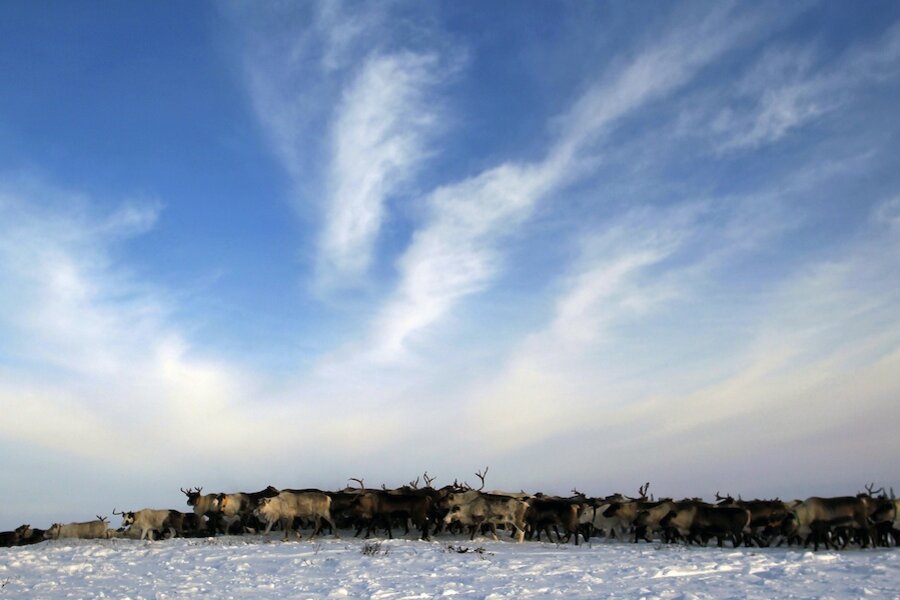Reindeer herders of northern Europe confront climate change
Loading...
The Sámi people have lived on the edge of the Arctic Circle, in the northern parts of Norway, Sweden, Finland, and the Kola Peninsula of Russia, for centuries. Their traditional livelihood is reindeer herding and subsistence fishing. The relationship between the Sámi people and the reindeer is rooted in a deep spirituality, and it relies on the existence of the unique landscape of northern Scandinavia. Unfortunately, the environment that the Sámi depend on, and thus the Sámi culture, is being threatened by climate change and land rights issues.
The land the Sámi occupy is one of Europe’s last wilderness areas, and it is rich in biodiversity thanks to the Sámi’s care. The Sámi’s traditional reindeer grazing lands have been lost due to infrastructure development such as oil exploration, dam building, logging, tourism, and commercial use. However, the Sámi have made some progress in protecting their lands and their culture both nationally and internationally.
The Laponian area in northern Sweden, where the Swedish Sámi live, is designated as aU.N. Educational, Scientific and Cultural Organization (UNESCO) World Heritage cultural landscape. According to UNESCO, the Laponian area is the largest area in the world where the ancestral way of life based on seasonal livestock movement still exists. The area has been well preserved and continues to be home to a wide array of large mammal predators,100 bear species, and over 150 bird species. Traditional reindeer husbandry is a right guaranteed by the Swedish government in the Laponian area. Unfortunately, in Finland,90 percent of the Sámi land belongs to the government, and the use of that land for forestry threatens reindeer herding. The Sámi in Norway have had similar challenges with land rights, but increased activism by the Sámi people helped to give them rights to 95 percent of the land and water in Finnmark County.
Reindeer herding today looks much different than it once did in the region. Herders no longer walk or ski for hundreds of miles to find the best grazing grounds. Instead, they use mechanization and technology to make their livelihood feasible. According to Gládu, the Resource Centre for the Rights of Indigenous Peoples, the modernized lifestyle still depends on traditional knowledge, especially when there are changing climate conditions. The Sevettijarvi Declaration, written by indigenous representatives of the Indigenous Peoples Biocultural Climate Change Assessment (IPBCCA), states, “On Skolt Sámi lands, waters don’t freeze in the same way anymore; and the in the autumn, instead of proper snow cover, ice rain falls on the ground, impacting reindeer food cycles.”
With climate change disrupting the reindeer habitat, traditional Sámi foods are also at risk of being lost. The Slow Food Foundation for Biodiversity established a Presidium for Reindeer Suovas to support the continued production of reindeer meat as a food supply. Suovas are made by dry-salting reindeer meat and smoking it over an open fire for eight hours. They were developed to last for long periods of time while herders moved from place to place.
As the Sámi across Norway, Finland, Sweden, and Russia unite to protect their lands and their way of life, they are also protecting unique food practices and knowledge around reindeer herding and reindeer meat. One Sámi reindeer herder explains, “Nature is the most important thing. Reindeer herders lived here long before anyone else arrived. The Samis did not disturb nature, and we have lived here for thousands of years.”







